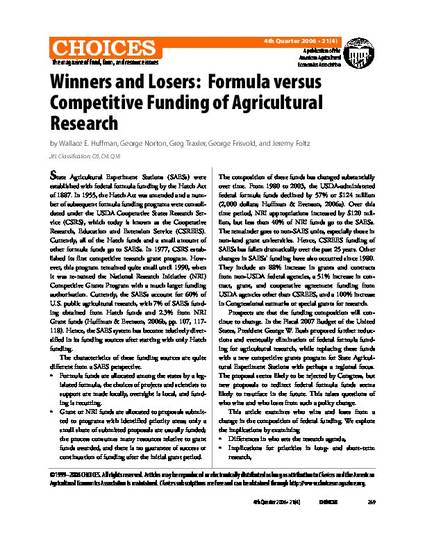
State Agricultural Experiment Stations (SAESs) were established with federal formula funding by the Hatch Act of 1887. In 1955, the Hatch Act was amended and a number of subsequent formula funding programs were consolidated under the USDA Cooperative States Research Service (CSRS), which today is known as the Cooperative Research, Education and Extension Service (CSREES). Currently, all of the Hatch funds and a small amount of other formula funds go to SAESs. In 1977, CSRS established its first competitive research grant program. However, this program remained quite small until 1990, when it was re-named the National Research Initiative (NRI) Competitive Grants Program with a much larger funding authorization. Currently, the SAESs account for 60% of U.S. public agricultural research, with 7% of SAESs funding obtained from Hatch funds and 2.3% from NRI Grant funds (Huffman & Evenson, 2006b, pp. 107, 117- 118). Hence, the SAES system has become relatively diversified in its funding sources after starting with only Hatch funding.
Available at: http://works.bepress.com/wallace-huffman/103/

This article is from Choices 21 (2006): 1. Posted with permission.